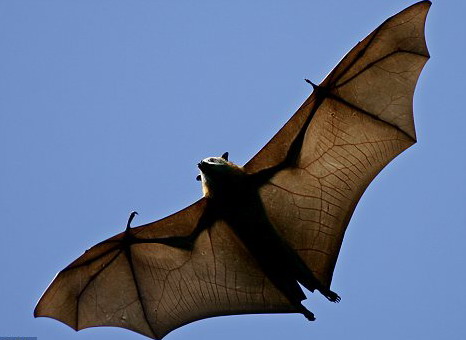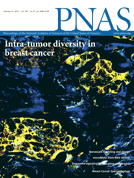导读:继禽流感、猪流感相继爆发之后,近日,科学家又在蝙蝠身上发现了一种新型流感病毒。据了解,目前这种病毒对人类的作用尚不明。

继禽流感、猪流感相继爆发之后,近日,科学家又在蝙蝠身上发现了一种新型流感病毒。
但是请不要翻出H1N1(猪流感)时期用剩的洗手液,毕竟这种病毒还没有那么流行。当被问及这项发现将会给人类健康带来何种威胁时,研究者之一的Ruben Donis说:“现在下定论还为时过早。”
据美国疾病控制和预防中心流感部门分子病毒学和疫苗分支主席Donis介绍,我们还不知道这种蝙蝠流感病毒能否感染人类。
他和一队由美国和危地马拉研究人员组成的科研小组,一起从危地马拉的一种吃水果、肩膀呈黄色的小型蝙蝠身上分离出了这种病毒。截止到目前,还没有明显的证据能够证明这种新发现的病毒会让蝙蝠出现任何病症。
最新的寄主
疾病控制中心(CDC)宣称,这种新病毒隶属于流感病毒之一的A型流感家族。鸟类是这些病毒的天然寄主,但它们也会出现在其他动物身上,包括猪、马、海豹和鲸鱼,当然也包括人类。一般来说,流感病毒引发流行病通常都是从被感染的动物开始的,Donis说。
虽然至今为止,还没有发现蝙蝠对人感染流感有任何“贡献”,但是,它们确能携带一系列可传染给人和家禽的疾病,包括严重急性呼吸综合症(SARS)、狂犬病和马尔堡出血热。
蝙蝠广泛的全球分布性、社交性及长距离飞行能力让其有足够的能力去获取和传播病毒,Donis写道,他们的这项研究发表在2月27日出版的PNAS期刊上。
一种新型流感
对A型流感的命名跟H1N1类似,都包含有一个H和一个A,“H”指的是血球凝集素(Hemagglutinin)、而“N”指的是神经氨酸酶(Neuraminidase),二者都是病毒表面的蛋白质(抗原)名称。这种蝙蝠病毒的H蛋白足够特别,我们只能给它一个新的封号——H17;而其N蛋白似乎比其它所有的A型流感和只感染人类的B型流感都要古老。
虽然研究人员还无法在实验室培育这种病毒,但是他们发现,这种蝙蝠病毒的某些成分确能与一种人类流感病毒(1933年分离出的一种H1N1病毒)相混合和匹配。这意味着这种蝙蝠病毒应该具备重新整合的能力——不同的流感病毒侵染同一个宿主细胞后,相互交换部分元件,重新整合成一种具有不同属性的新病毒的能力。这个过程能够引发大规模的流感大流行,比如2009年爆发的全球H1N1流感大流行,亦被称作猪流感。
我们也不清楚这在自然界中能否发生,因为它需要蝙蝠流感病毒和一种人类感染病毒同时侵袭同一动物,科学家们也不知道它发生的概率能有多大,Donis说。

A distinct lineage of influenza A virus from bats
Suxiang Tong, Yan Lia, Pierre Rivailler, Christina Conrardy, Danilo A. Alvarez Castillo, Li-Mei Chen, Sergio Recuenco, James A. Ellison, Charles T. Davis, Ian A. York, Amy S. Turmelle, David Moran, Shannon Rogers, Mang Shi, Ying Tao, Michael R. Weile, Kevin Tang, Lori A. Rowe, Scott Sammons, Xiyan Xu, Michael Frace, Kim A. Lindblade, Nancy J. Cox, Larry J. Anderson, Charles E.Rupprechtd, and Ruben O. Donisb
Influenza A virus reservoirs in animals have provided novel genetic elements leading to the emergence of global pandemics in humans. Most influenza A viruses circulate in waterfowl, but those that infect mammalian hosts are thought to pose the greatest risk for zoonotic spread to humans and the generation of pandemic or panzootic viruses. We have identified an influenza A virus from little yellow-shouldered bats captured at two locations in Guatemala. It is significantly divergent from known influenza A viruses. The HA of the bat virus was estimated to have diverged at roughly the same time as the known subtypes of HA and was designated as H17. The neuraminidase (NA) gene is highly divergent from all known influenza NAs, and the internal genes from the bat virus diverged from those of known influenza A viruses before the estimated divergence of the known influenza A internal gene lineages. Attempts to propagate this virus in cell cultures and chicken embryos were unsuccessful, suggesting distinct requirements compared with known influenza viruses. Despite its divergence from known influenza A viruses, the bat virus is compatible for genetic exchange with human influenza viruses in human cells, suggesting the potential capability for reassortment and contributions to new pandemic or panzootic influenza A viruses.
文献链接:








